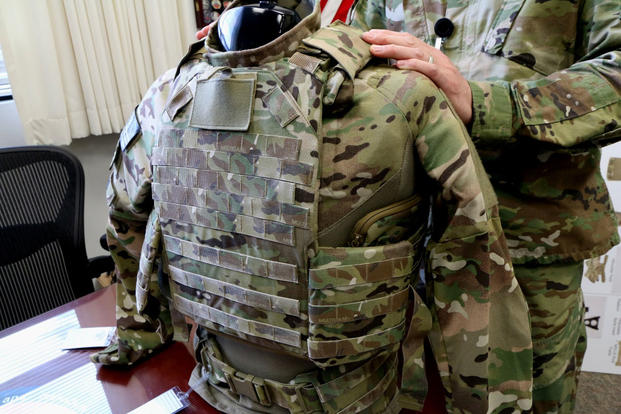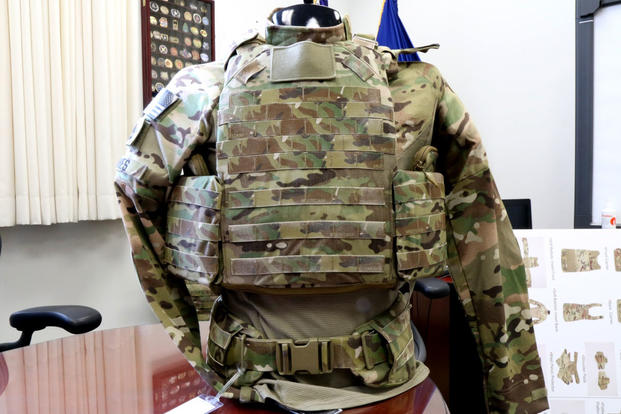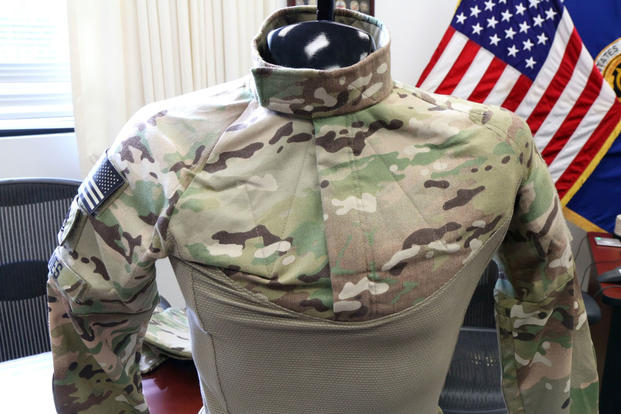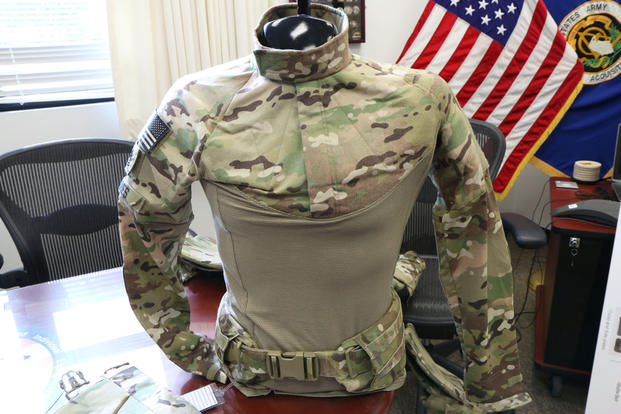U.S. Army equipment officials are working on a new lightweight, body armor system that combines a plate-carrier style vest with an armored combat shirt.
The new Soldier Protection System is being designed to provide soldiers with as much as a 14-percent weight savings than the current soldier protective equipment, according to Col. Dean Hoffman IV, the head of Army's Project Manager Soldier Protection and Individual Equipment.
"This is a modular system; if you want to deal with weight, you have got to go super-low, light-weight, but we also have to be able to protect the soldiers," Hoffman said during recent interview with Military.com. "It gives commanders more flexibility, more options to choose the right level of protection to suit the mission."
The Soldier Protection System, or SPS, is a full ensemble that goes beyond torso protection and provides the soldier with improved protection for vital areas such as the head and face, Hoffman said.
Currently, the Army issues soldiers the Improved Outer Tactical Vest, or IOTV, which offers torso, neck, shoulders and groin protection against 9mm and shrapnel threats.
Rifle plates such as the Enhanced Small Arms Protective Insert and the X-Threat Small Arms Protective Insert offer different levels of front and back protection against high-velocity rifle rounds. Smaller versions of these plates can be worn on each side of the torso for additional protection.
The IOTV weighs roughly 31 pounds in size medium when it equipped with front, back and side armor plates.
The Army also issues the Soldier Plate Carrier System, a more stream-lined system designed to lighten the soldiers' load, especially during fast-paced dismounted combat operations. It averages just under 22 pounds with front, back and side armor plates.
The new Modular Scalable Vest portion of the SPS features a more streamlined design compared to the IOTV, similar to the plate carrier. Soldiers can wear front, back and side rifle plates depending on the threat level, Hoffman said.
It also features a new quick-release system that is much simpler than the QRS on the IOTV, Hoffman said.
One of the biggest challenges with the quick-release system on the IOTV was it relies on a complex system of cables, he said.
"You actually had to get training, and it was a pain to put together," Hoffman said.
The new quick-release on the SPS activates easily by pulling a special tab in the front causing the front and rear sections to separate and drop to the ground. Special cables are integrated into the Fastex-style buckles, making it easy to reassemble, Hoffman said.
The most noticeable feature of the SPS is the new Ballistic Combat Shirt, or BCS, which has been updated with soft armor on the neck, shoulders, high chest and high back to protect against 9mm rounds and shrapnel, Hoffman said. The lower part of the shirt is still a breathable, fire-resistant material.
"It is just a soft armor, almost like a concealable-body-armor-type material," Hoffman said, describing how this latest version of the combat shirt is designed to be worn beneath the vest to eliminate the need for the Deltoid Axillary Protectors, or DAP.
The Army developed the DAP system early in the Iraq war to protect the shoulder and upper arm from shrapnel wounds many soldiers were receiving from enemy improvised explosive devices.
But the DAP is also bulky and prone to snagging when exiting Strykers and other vehicles.
"So when you would come out, those [DAPs] would catch on something, it would pull you down and rip off," Hoffman said. The armor on the combat shirt "is all smooth, contoured … it gives you much more flexibility and maneuverability," Hoffman said.
The new shirt also features a partial zipper closure and a mandarin-style color that is much softer than the IOTV collar that tends to rub and chafe on the neck, Hoffman said.
"We did the human-factors testing and everybody loved the shirt," Hoffman said. "At the end of the day, we want to provide protection to the soldier, but we also got to make sure he has the performance that he needs."
The goal of the SPS is to shave off 8 to 14 percent of the weight, Hoffman said, so at the most it would weigh about 4.3 pounds lighter than the average IOTV's 31-pound weight.
There is also an armored belt portion to the system which includes a male-female connector that attaches the belt to the vest in the back. The idea behind the concept is to help make the load more comfortable to carry.
Several companies have made these rigid-spine loadbearing systems but none have fared well in Army tests.
"When we did the initial human factors testing, this was the one thing that the soldiers did not like, so we have kind of gone back to the drawing board," Hoffman said.
For now, the Army plans to make this a separate effort from the SPS, so there is no chance of it holding up the program, Hoffman said.
But there is more to the SPS than just the vest and armored shirt, Hoffman said.
There is also the Integrated Head Protection System, which gives the soldier the ability to attach extra armor to the top of the helmet to provide additional protection against snipers shooting down on soldiers riding in an open turret, Hoffman said.
The system would also include an armored facemask to protect against gunfire and shrapnel, he said.
"We are keeping abreast of the current threats that are out there and making sure that our equipment is going to stop that," Hoffman said, adding that the Army recently approved a requirement for the effort.
The goal is to begin fielding the vest and BCS sometime in 2019 Hoffman said.
"We kind of did the proof of concept; we have proven that we can do it," Hoffman said.
The initial fielding plan is to issue the SPS to soldiers who are deploying to a combat theater, Hoffman said.
"This will probably not go to all the warfighters," he said. "Anyone who is being deployed and going into theater will always have the best equipment possible."
--Matthew Cox can be reached at matthew.cox@military.com.






























